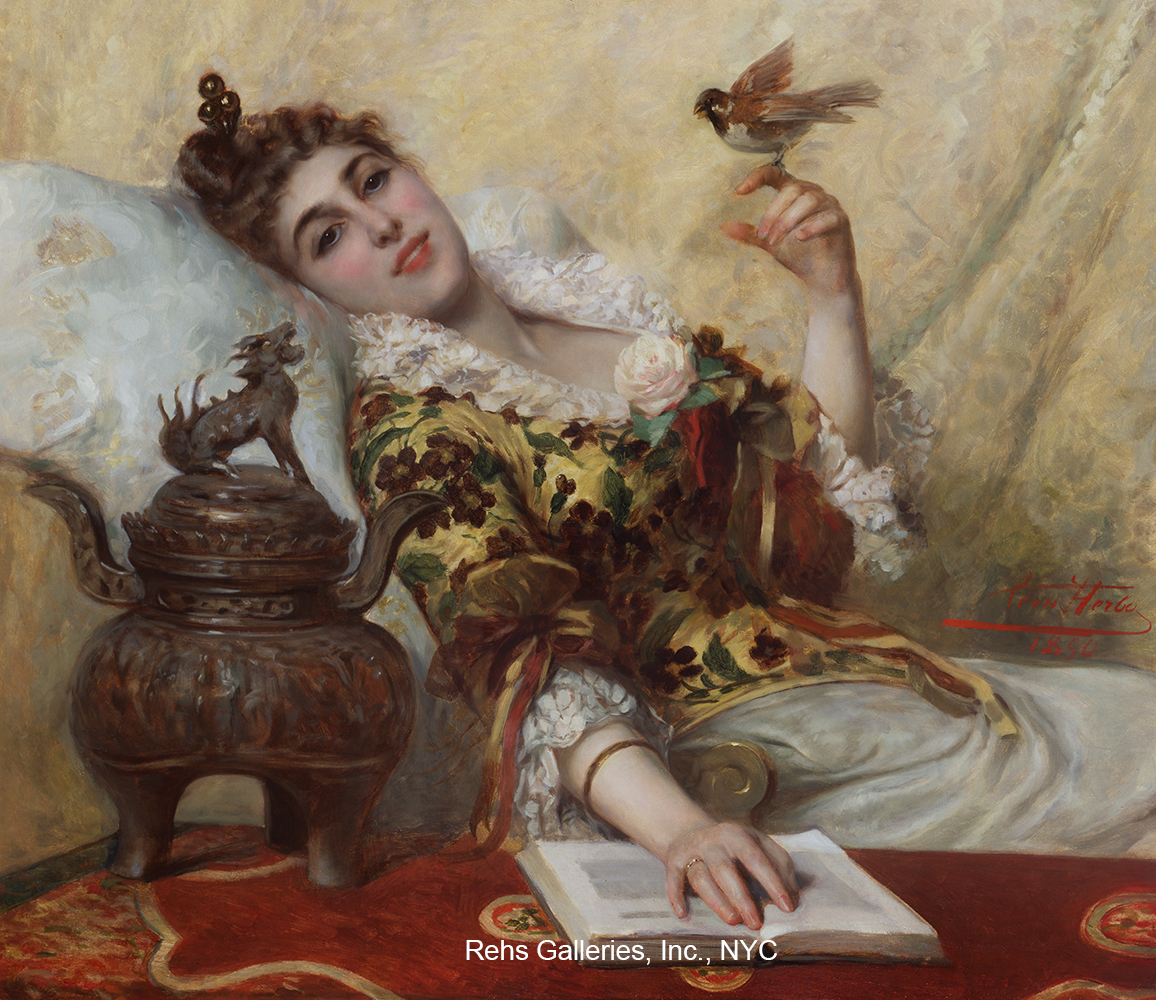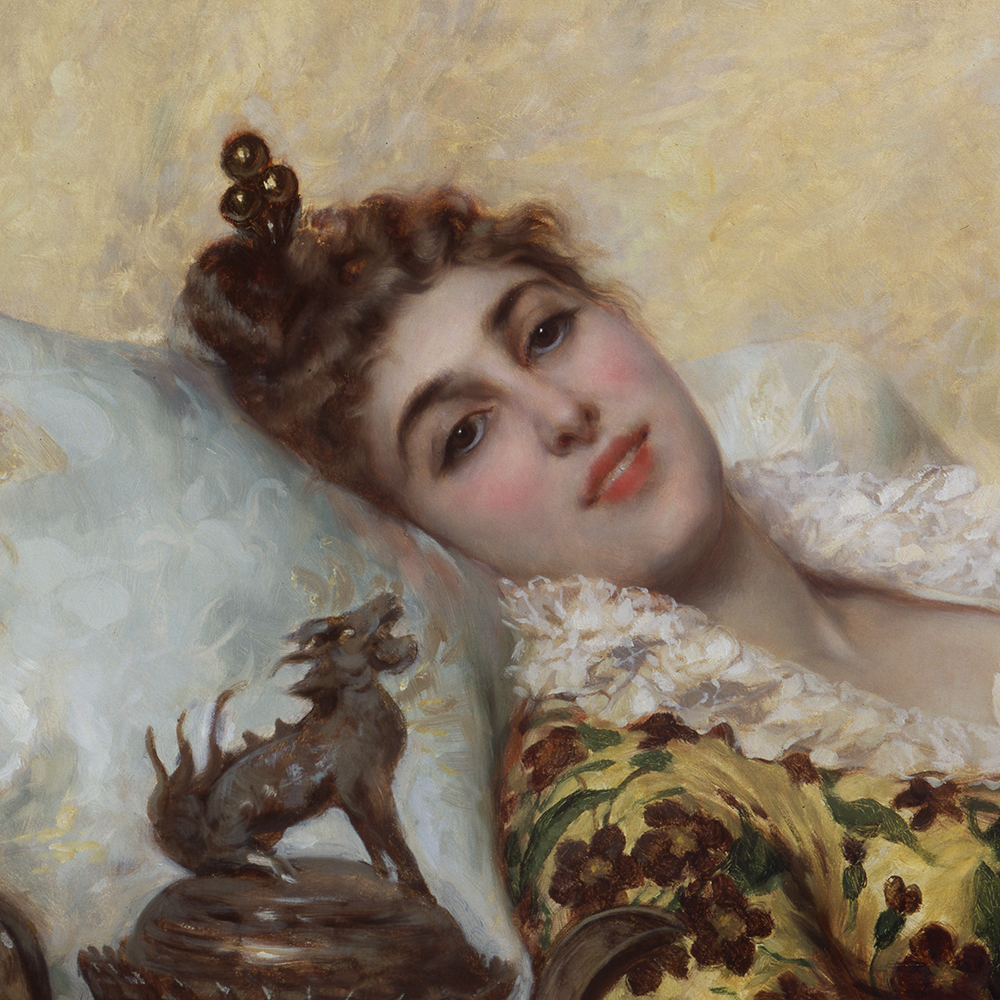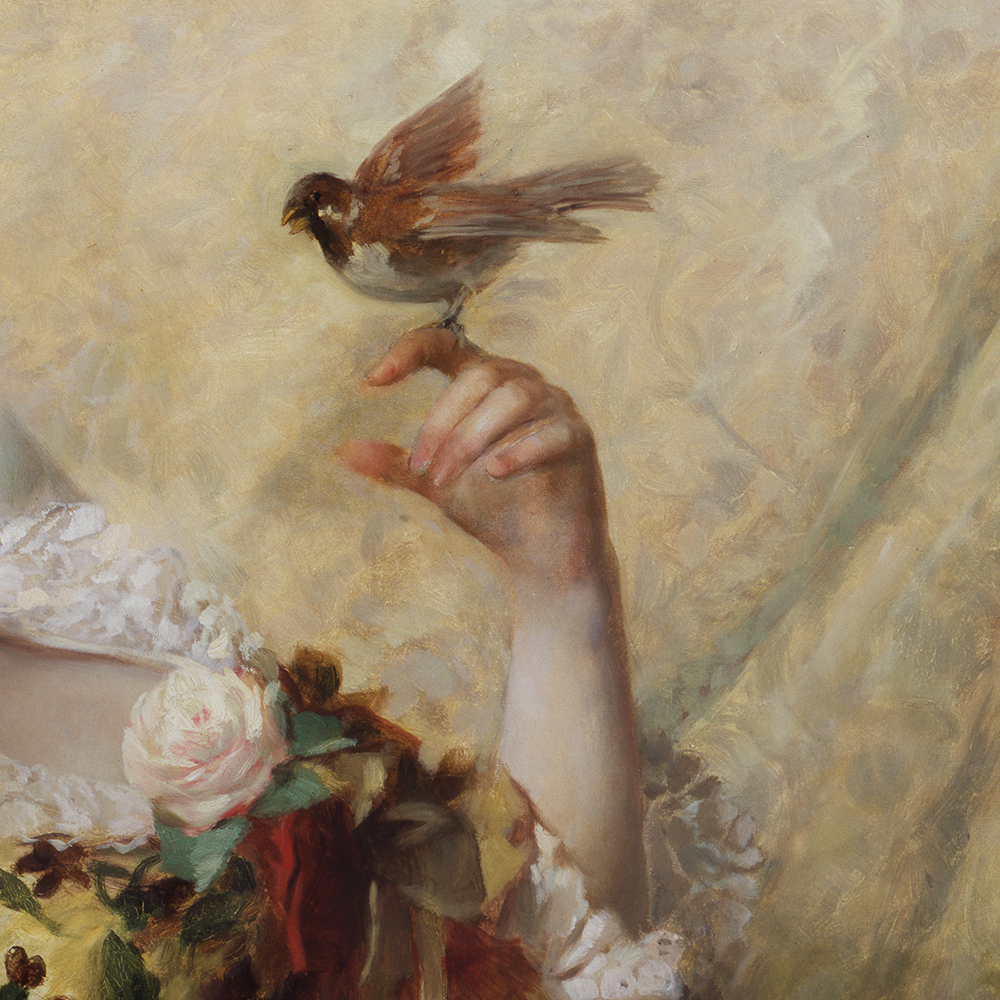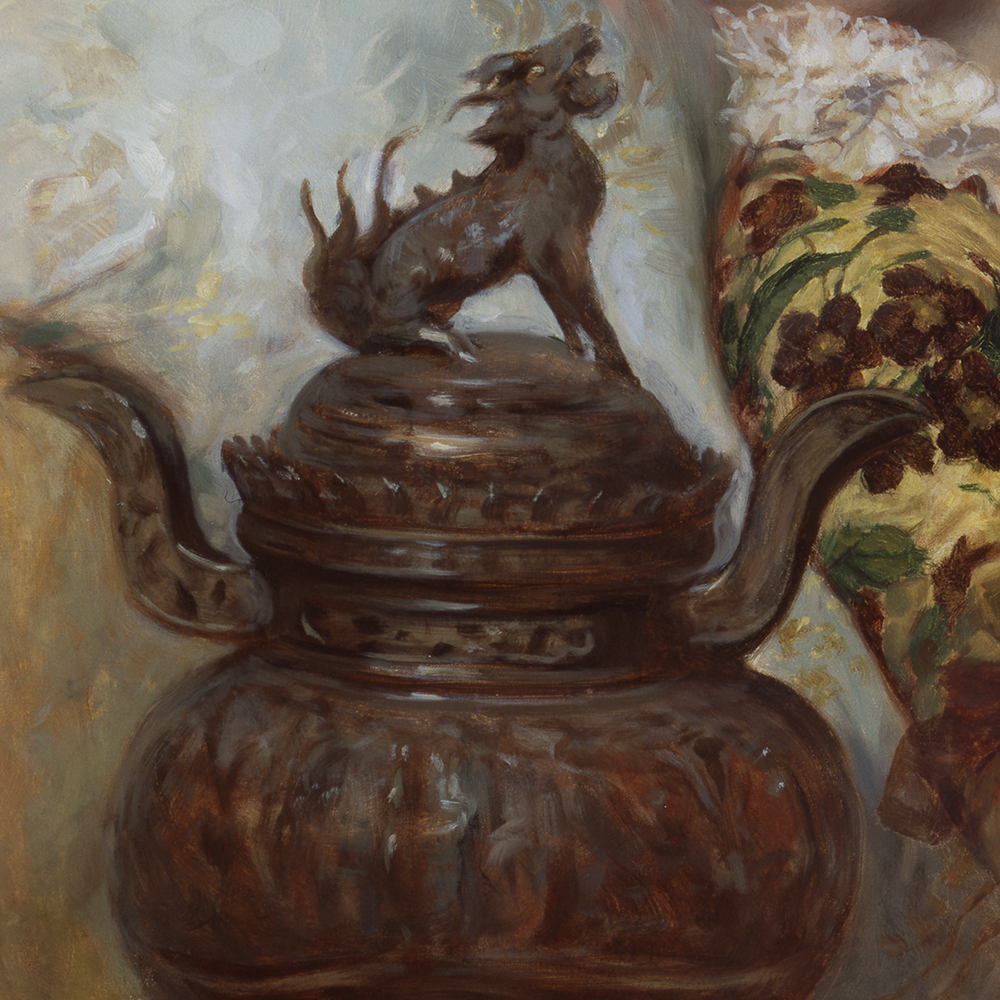Leon Herbo
(1850 - 1907)
La Charmeuse
Oil on canvas
31 x 36 inches
Signed and dated 1890
BIOGRAPHY - Leon Herbo (1850 - 1907)
Female beauty was much prized in the 19th century and for the first time a number of pictures were painted whose sole purpose was the depiction of beauty; not so much in the form of specific portraiture, but more as homage to feminine beauty in its own right. It was this climate of receptivity that encouraged Greuze, and later Leon Herbo and others like him, to paint series of portraits of attractive girls. It is incontestable that the appeal of the most risqué cosmopolitan beauties depicted in many pictures lay in their citizenship of the demimonde. Emile Zola’s Nana may have figured for the model of some of these paintings, as she did in Manet’s portrait of her.
The vogue for titles such as La Mysterieuse or La Belle Dame sans Merci (A Beautiful Woman Without Mercy), presented the late 19th century woman as an intriguing creature, emphasizing the inner qualities of the female sex while at the same time presenting their decorative exterior. Herbo’s La Charmeuse (The Charmer) is one work from an important group of paintings done by the artist during the late 19th century, paying tribute to the beautiful women of his time, and exploring their sensual and seductive nature.
Leon Herbo was a Belgian genre and portrait painter, born in Templeuve on October 7, 1850. A pupil of Legendre and Stallaert at both the Academies of Tournai and Brussels, Herbo mastered the art of fine detail. He then continued his studies in France, Germany and Italy before returning to settle in Brussels. His debut exhibition was in 1875, and he took part in exhibits throughout Europe. He was a prolific artist and it is believed that he produced over 1200 paintings during his lifetime.
In 1876, Herbo, Julien Dillens and Emile Namur founded L’Essor, the Belgian realist school. The group’s members were concerned with realism, each of them, however, finding their own style and emphasizing their varied personalities. The Brussels based group organized annual exhibitions from 1876 – 1881, as well as later exhibitions for its members in Oestde, Antwerp and London. In 1891, on the occasion of the group’s 15th anniversary, the “Essorians” opened at the Brussels Museum with a historic retrospective exhibition of the works of their founding members; among them were a number of works by Herbo.
In 1889 Herbo received an Honorable Mention at the Universal Exposition in Paris and was made a Knight of the Order of Leopold. He continued working in Brussels and began teaching at the Academy, where he would soon take over as Director.
Today, examples of his work can be found in both public and private collections.




